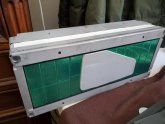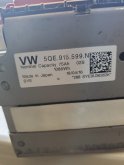I have a bunch of extra e-golf battery modules I'd like to use with my Renogy Rover. They are 4s3p LiPo chemistry batteries from what I can tell, which means fully charged they should be at 16.8 volts. I have a Renogy Rover 30a unit and the bluetooth module, but I can't seem to get the parameters set up to work right with these batteries. Seems they want a 12v or 24v system. Even when I put the controller in USER mode and set the parameters: If I set it on 12v I get a battery overvoltage error, and on 24v the system seems to want to overcharge them. My DC load is just landscape lighting which seems to be ok with the 16.8v output.
I set:
HV Disconnect, Charge Limit Voltage, Equalize charge voltage, boost charge voltage, float charge voltage, boost char return voltage all to 16.8v
Over disc reture volt, low voltage alarm, over discharge volt all to 12v
Am I just using the wrong controller or is it possible to get this to work?



I set:
HV Disconnect, Charge Limit Voltage, Equalize charge voltage, boost charge voltage, float charge voltage, boost char return voltage all to 16.8v
Over disc reture volt, low voltage alarm, over discharge volt all to 12v
Am I just using the wrong controller or is it possible to get this to work?










